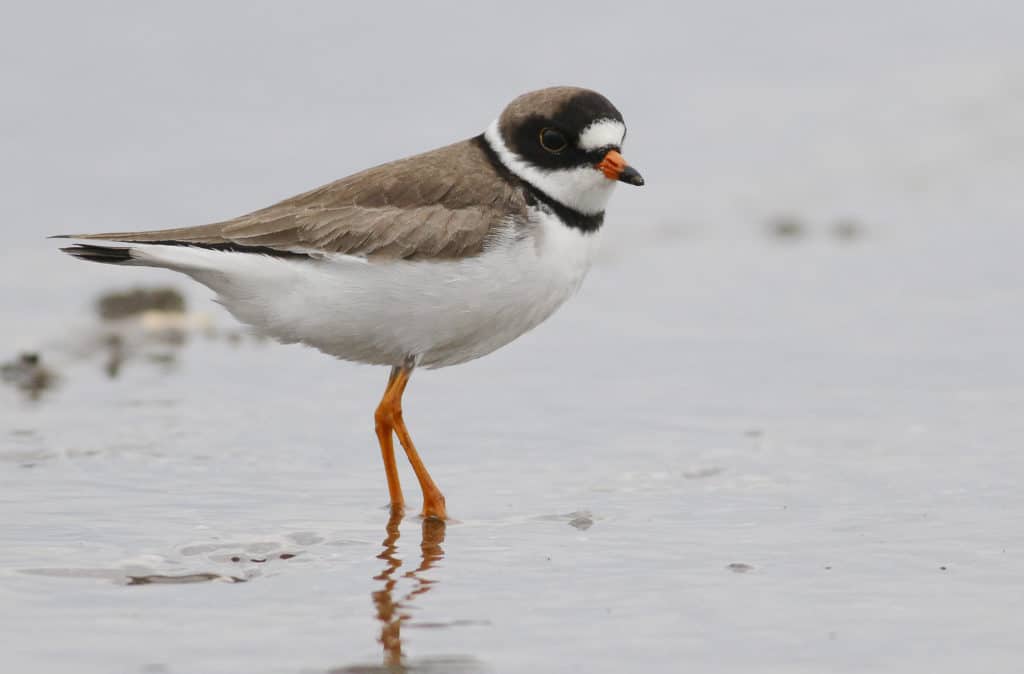Creature Feature

Learning About Shorebirds
I grew up in St. Petersburg, Fla., just about two miles from the Gulf beaches. I spent quite a lot of time at the beach, playing, fishing, working and relaxing. Although I could name almost every fish and crab species along the shore, I never quite got interested in the birds that ran around at the edge of the waves. All of them were “sandpipers” to me.
About nine years after I moved away from Florida, I became interested in bird migrations (I think it was a National Geographic article that triggered my interest). Shorebirds became more interesting because of the remarkable distances they travel. I have since tried to identify and learn about the migration patterns of all the common shorebirds—also known as the peeps, a common bird-watching term for little birds running through the waves.
One of my favorite peeps is the semipalmated plover. Semipalmated means it has several distinct color bands. Plovers, when compared to sandpipers, have shorter bills and bigger eyes. These particular plovers are pretty small, about the size of a hen egg. They are a favorite because they run along the beach in a charming manner. Along the tide line, they will run five to 10 steps and then suddenly stop. Frequently they bob forward when they stop like they are hinged on a spring. When they feed, on small crustaceans and worms, they rapidly tilt forward and peck at the sand or mud and then suddenly tilt upright and freeze in place. The sudden stops are probably a protective maneuver. Once they freeze in place, they blend into the debris of the shoreline. I have seen a flock of plovers run and stop in unison but have also seen them take turns. Their predictable movements make them easy to photograph.
The plovers make a long migration each spring from the Atlantic and Gulf coasts to northern Canada for nesting. After they rear three or four young to the point of being able to fly, they start a late summer migration south. They commonly spend winter along the Maryland coastline including the Chesapeake Bay and will start showing up in early August. They are one of the few shorebirds whose population has actually increased, although the reason is unknown.
As you visit the shore look for the little birds with short multicolored bills that make short quick runs and sudden stops. They will likely be plovers.
